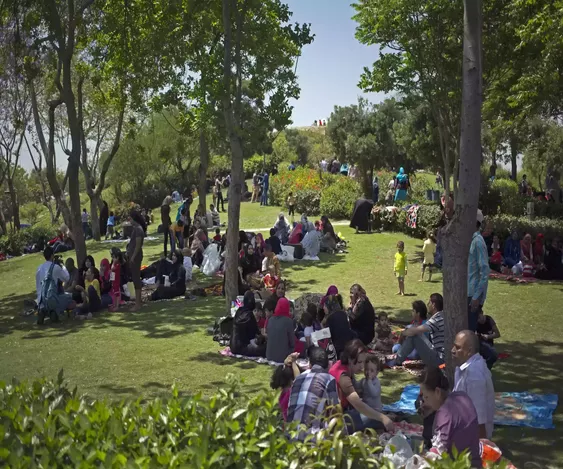Sham El Nessim: A Journey Through the Scents, Sounds, and Colors of Ancient Egypt's Most Cherished Spring Festival
Apr16,2023 • 6 min read

ham El Nessim, an ancient Egyptian festival marking the beginning of spring, has been celebrated for over 4,500 years. Falling on the Monday following Coptic Easter, this unique holiday holds a special place in the hearts of Egyptians, transcending religious boundaries and uniting the country to celebrate renewal, growth, and life. We'll explore the history, customs, and significance of Sham El Nessim and why it continues to be a beloved tradition in modern Egypt.
The History of Sham El Nessim
Sham El Nessim can be traced back to the days of the Pharaohs when it was known as "Shemu," a festival honoring the god Osiris and celebrating the rebirth of nature. As Egypt embraced Christianity, the festival adapted, gradually shifting away from its pagan roots and finding a place within the Coptic Christian calendar. Today, Sham El Nessim remains a secular public holiday, celebrated by Egyptians of all faiths and backgrounds as a day of joy and togetherness.
Festive Customs and Traditions
The celebration of Sham El Nessim is filled with colorful customs and rituals that reflect the festival's long history and the unique blend of Egyptian culture. Some of the most prominent customs include:
1. Early Morning Picnics: Egyptians from all walks of life gather in parks, gardens, or along the Nile to enjoy picnics with family and friends. This tradition encourages people to spend time outdoors, soaking in the beauty of spring and the fresh air.
2. Coloring Eggs:

Like Easter, egg painting is a popular tradition during Sham El Nessim. Egyptians paint and decorate hard-boiled eggs, which are then cracked open during picnics to symbolize the start of the new season. The colorful eggs represent fertility and the circle of life.
3. Traditional Foods: No celebration would be complete without delicious food, and Sham El Nessim is no exception.

The most iconic dish is fesikh, a fermented, salted, and dried fish that's been a festival staple since ancient times. Egyptians also enjoy green onions, lettuce, and termis (lupini beans), which are believed to symbolize rebirth and renewal.
4. Aromas and Flowers: To honestly "smell the breeze," Egyptians adorn their homes and public spaces with vibrant flowers and fragrant plants. Jasmine, roses, and gardenias are particularly popular for their delightful scents, enhancing the festive atmosphere.
5. Music and Dance: Music and dance play a significant role in the celebrations, as people gather to enjoy traditional Egyptian music and perform folk dances. Street performers, musicians, and entertainers often enhance the festive atmosphere.
Cultural Significance
Sham El Nessim transcends religious boundaries, bringing together Egyptians from all walks of life to celebrate the nation's rich cultural heritage. The festival fosters a sense of unity, reminding Egyptians of their shared history and the importance of preserving their ancient customs and traditions.
In recent years, Sham El Nessim has also gained international attention, with tourists flocking to Egypt to experience the festive atmosphere and partake in cultural activities. This increased interest boosts the country's tourism industry but also helps to promote a deeper understanding of Egyptian culture and history worldwide.
Conclusion
Sham El Nessim is a beloved holiday in modern Egypt, bridging the gap between ancient customs and contemporary life. As Egyptians gather with their loved ones to rejoice in the arrival of spring, they are participating in a celebration that has brought people together for millennia. So, whether you find yourself in Egypt or elsewhere, consider taking a moment this spring to appreciate the beauty of nature, the joy of togetherness, and the spirit of renewal that Sham El Nessim represents.

